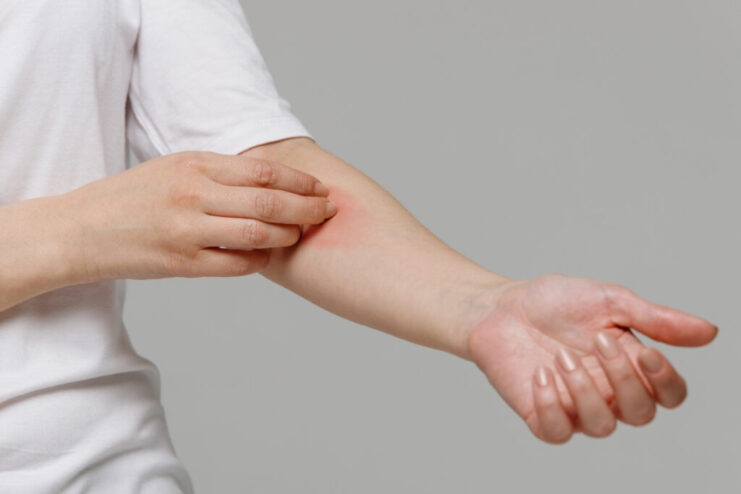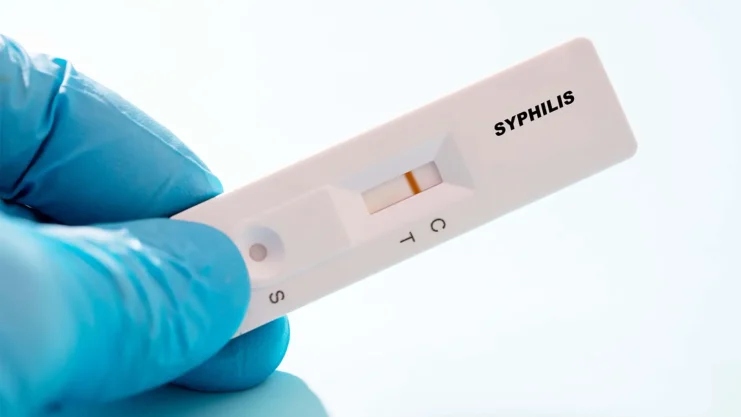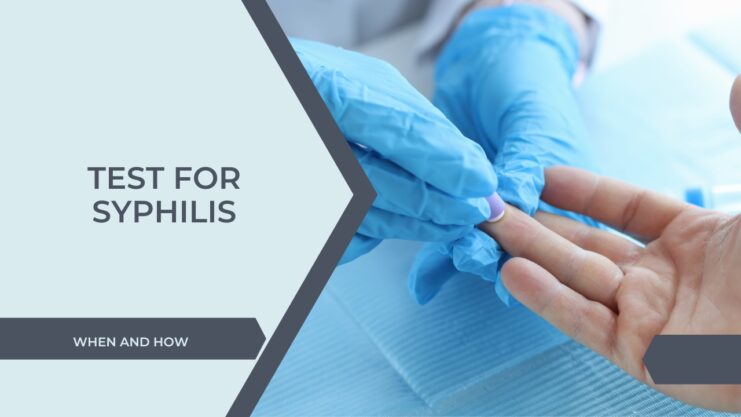In my quest to unravel the truths surrounding Syphilis testing, I found myself immersed in a world of intriguing medical knowledge. Today, I want to share with you what I’ve discovered about this bacterial infection that has been the subject of many questions and misconceptions.
As I sat down to explore the depths of Syphilis testing, I couldn’t help but feel a sense of responsibility to set the record straight. You see, I’ve been asked numerous times about this topic, and it’s time to shed some light on it with a personal touch.
Let’s journey together through the symptoms and stages of Syphilis. Picture this: contagious Syphilitic lesions known as Chancres and the enigmatic skin rash of secondary Syphilis, often called the Great Imitator due to its resemblance to various rashes. These manifestations can appear anywhere from 9 to 90 days after infection, but most commonly show up around 4 weeks post-infection. Fascinating, right?
Symptoms

First of all a few basic facts. Syphilis is a bacteria. It is transmitted via direct skin contact with contagious Syphilitic lesions. What are considered contagious Syphilitic lesions you say? Well, they are ulcers caused by Syphilis (known as a Chancres) and the skin rash that occurs in secondary.
The ulcers are generally single and painless (except in HIV positive patients where the ulcers can be multiple and painful). They can appear anytime between 9 to 90 days post infection.
Most commonly they appear at about 4 weeks post infection. The ulcers are found at the site of bacterial entry. So they can be anywhere but they are most frequently found in the anogenital region. The rash caused by secondary Syphilis is called the Great Imitator because it can look like any rash.
It appears 3 to 6 weeks after the initial Syphilitic ulcer (Chancre) has subsided. Since it can look like anything, it is hard to differentiate from other rashes (eg eczema). It is usually a macula-papular rash that involves the trunk more than the limbs and also involves the palms and soles.
Stages
Next I want to clear up some technical terms. Often people throw words at me like ‘Early Primary Syphilis’ and ‘Latent Secondary. This shows that there is a lot of confusion in the terminology out there. So let’s set the record straight.
There are 2 stages of Syphilis: Early and Late. The definition of early VARIES depending on which guidelines you read. According to the US CDC, if the infection was within the past 1 year, it is considered Early Syphilis. According to the WHO it is 2 years. Why does this matter? It determines what treatment a patient gets. Early Sypphilis requires less medicines than Late Syphilis. So far confusing enough? It gets worse.
Early is divided into 3 clinical stages. Primary , Secondary and Latent Syphilis (also known as Early Latent Syphilis). The stages are characterized as such: Primary Syphilis – presence of Chancre, Secondary Syphlis – presence of rash, Latent Syphilis – no symptoms.
Late is divided into 2 clinical stages. Tertiary and Latent (also known as Late Latent Syphilis). The stages are characterized as such: Tertiary Syphilis – End organ involvement including aneurysms, Latent – no symptoms.
There are 2 other types we will not be discussing in this post and they are Neuro-Syphilis (involving the nervous system) and Syphilis in the Newborn.
Syphilis Tests

Remember we said Syphilis is a bacteria? To be more precise, Syphilis is a disease caused by a bacteria and this bacteria is called Treponema Pallidum. The special thing about T. Pallidum is that it cannot be cultured. In other words, you cannot grow it in a dish. The only way to prove it is there is either to see the live bacteria directly or by using indirect evidence of its presence (something known as serology tests which are essentially blood tests).
To see the live bacteria you first need an active lesion. Next, you need a skilled person to sample bacteria from the lesion. Next you need special equipment and specially trained medical professionals to use this special equipment to look for the bacteria.
Because the case load of for most countries is rather low, most labs either do not have the equipment or the training. Also, because if the high rate of false negatives from these tests, patients suspected of Syphilis are required to follow up with serology testing anyway. In other words, these tests are rather useless except in very specific settings.
Serology tests are the mainstay of diagnosing. There are basically 2 types of serology tests: Treponemal Tests and Non-Treponemal tests. There are many types of Treponemal Tests (eg TPHA, FTA-Abs etc). There are also many types of Non-Treponemal tests (VDRL, RPR, HEAT etc). For ease of discussion we will consider all Treponemal tests the same and all Non-Treponemal tests the same.
The one very important thing to remember is that there is no such thing as one perfect ‘most accurate’ test for Syphilis. This is what most people look for and it is really just chasing a rainbow.
- Treponemal tests are very good at screening for Syphilis. They are as good as 100% accurate in diagnosing Syphilis except under 3 conditions. The first is very early Syphilis. When I say very early I mean less than 12 weeks from the date of infection. Although Treponemal tests are as good as conclusive at 4 weeks, the recommendation is still to retest at 12 weeks. The second is very late latent. How late? Nobody knows. The accuracy of Treponemal tests is late latent drops from 100% to 97% over several years. The third and last condition under which Treponemal tests are of no use is if a person has been previously infected with disease. Even if this person has been treated successfully, the Treponemal test will still remain positive. So there is no way to know if this person has been re-infected or not using Treponemal tests.
- Non-Treponemal tests are often used for screening of Syphilis in places where the prevalence is relatively high. This is because of the third reason given in the preceding paragraph. (Also because it is cheaper). So you would notice that European Guidelines recommend using Treponemal tests for screening and most Asian guidelines recommend using Non-Treponemal tests. On the whole, Non-Treponemal tests are LESS ACCURATE than Treponemal tests when used for screenig of Syphilis. They are however useful under 2 conditions. The first is when a person has been previously infected with Syphilis and we need to find out if he or she has been re-infected or not. The second is for monitoring of treatment success or failure.
If a patient has never had Syphilis before, which would be the majority of readers here, and you HAD to choose one test, than the Treponemal test is better. Remember to always test at 4 weeks and retest at 12 weeks.
Final Words
I would like to end off on the note that nothing in Medicine is straightforward. Just when you think you had a handle on Syphilis testing, let me tell you this: All the above serology tests mentioned above will also be POSITIVE if a person has any of the Non-Syphilitic Treponemal Diseases.
You didn’t think Syphilis was an only child did you? There are other bacteria under the Treponemal family which will all test positive using the exact same tests as we use to diagnose Syphilis.
So after all this discussion, we come back to square one. The same usual boring advice I give everyone.
Related Posts:
- Screening for Genital Herpes: Knowledge is Power
- The Different Stages of Syphilis Infection and the Symptoms
- HIV ELISA Test And HIV ECLIA Test: The Power of Accuracy
- When to Test for HIV During and After Completion of…
- Dyspepsia and Urea Breath Test: The Silent Culprit…
- HIV RNA / DNA PCR Test – Nucleic Acid Amplification…












